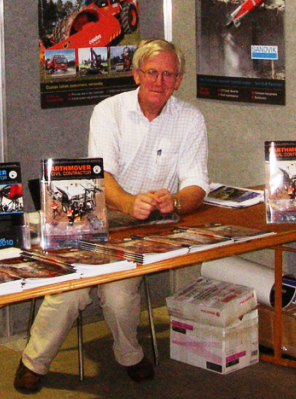My father’s parents lived in retirement about three blocks from the school and we used to walk around and have lunch with them every school day. The work of making those lunches, and I can’t for the life of me remember what they were, fell on our spinster aunt Mildred, who lived with our grandparents. Because they, Katie and Padge Palmer, were then in their late seventies, Milly looked after their every need and our substantial lunch time appetites.
Certainly we saw Katie and Padge at other times but if it hadn’t been for those lunchtime interactions I doubt we would have got to know them so well. Both were full of family history stories and I for one developed a keen interest in family backgrounds which persists to this day.
Padge had been a stock and station agent before he had become a farm manager and later farm owner. Agents as now used to travel at a speed of knots between clients and I remember him telling us how he would accelerate to 145km/h (90m/h) on a 15km straight and flat stretch of road between Mortlake and Terang in the early 1920s. He must have been a fairly careful driver though because I remember him in the 1960s, warning my father of a tricky but then long gone sandhill on the Geelong Road near Werribee.
Katie had a wealth of stories because her father remembered as a teen ager following Major Mitchell’s cart tracks on part of their family’s journey from Geelong to Coleraine when they moved to that district from Melbourne in 1850. She said too that her father remembered meeting about 100 warpainted Aborigines on the track. In Bill Moodie’s reminiscences written in 1914 he recalled them “coming straight down the track brandishing their spears and making the most hideous noises. On seeing our alarm however, their yells changed to laughter and they went on their way with the younger warriors playing by throwing their spears along the ground and racing one another to catch them”.
Also in his diary, Moodie wrote that some years later he was amazed on the road by about 30 miles of Chinese walking towards the Ballarat goldfields from South Australia. Their constant query was, “Bal’lat?”
I remember too that Padge had a rug on his bed made of platypus skins though it was more likely possum I suppose. I never really questioned its provenance but it was extremely warm and wonderful to feel.
For some reason Padge and Katie took to me and every time they went to old family stamping grounds of Warrnambool, Port Fairy and Portland I seemed to be the only grand child to go with them.
One time we went to a museum in Portland and the owner gave me a piece of rock which was dead spit for a piece of fruit cake. I might have only been six or seven but I wasn’t in any doubt it was a rock. However I playfully seemed to bite into it which greatly ruffled Katie’s feathers. She could see big dentist bills looming and tore strips off the poor curator for even giving me the rock to “taste”.
At the end of primary school we all went on to boarding schools and much more competitive and less friendly meals.
____________________________
As an aside, my brother this morning said a school friend happened to look in their boarding school’s kitchen and spotted Stan, a one time shearer’s cook around Dunkeld. But apparently Stan was such an awful cook that he only lasted a few days feeding any particular but always exceedingly hungry shearing team. History does not relate his length of tenure as a conjurer of school food.


 RSS Feed
RSS Feed
